
NOTE: All content on otterine.com is copyrighted and may not be reproduced in part or in whole. It takes a lot of time and effort to write and photograph for my blog. Please ask permission before reproducing any of my content. (More on copyright)
Categories:

Mail Wagon in real life
After discovering the Wesley W. Jung Carriage Museum, I figured I would try to find the real deal within road trip distance. As luck would have it, there’s one at an old post office about 40 minutes south of me. And, further to my good fortune, a lovely blog reader generously offered me her collection of miniatures magazine and a few books. Since she was also south of me, I made a morning of it. I met with her to pick up the magazines and then headed over to the Oak Park post office. This is a beautiful building, but there is no dedicated parking. Luckily, it was a nice day and the library parking garage was just across the street.
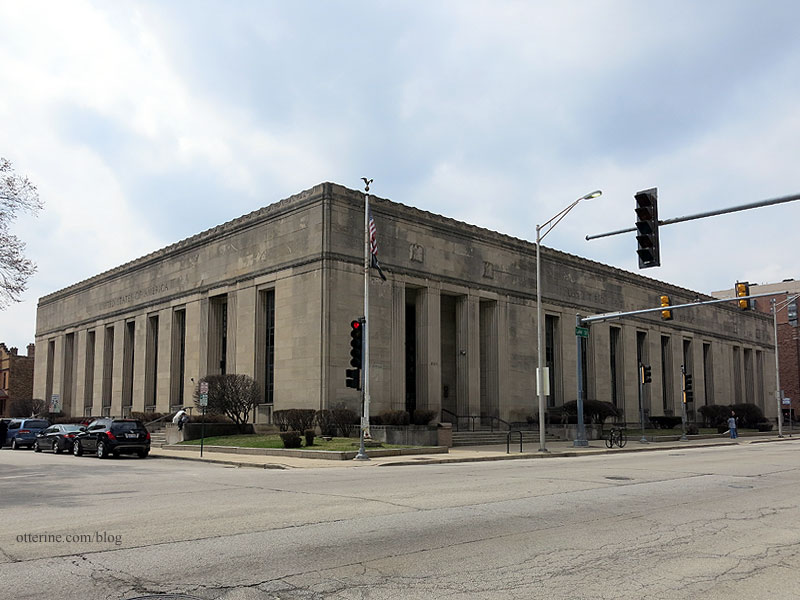
The mail wagon did not disappoint. :D
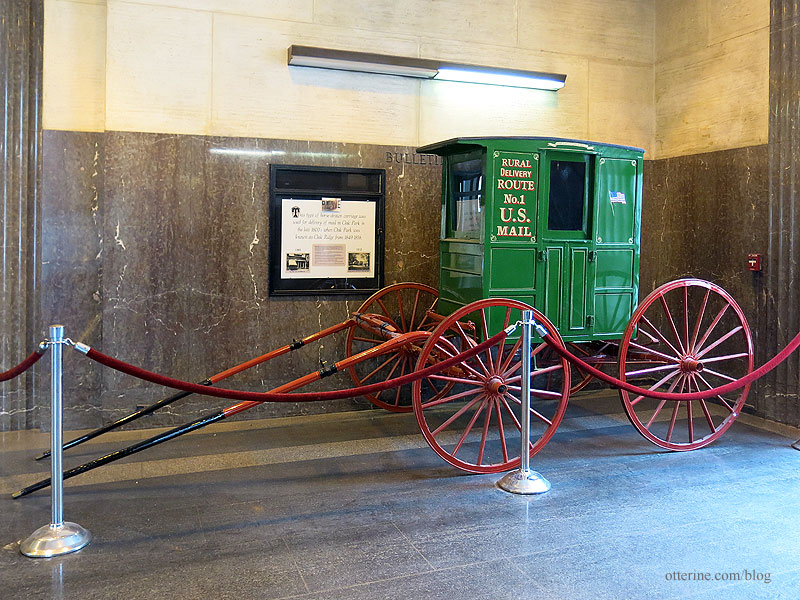
I knew the cabin itself would be skinny, but you can see just how wide the wheel axles are in relation.
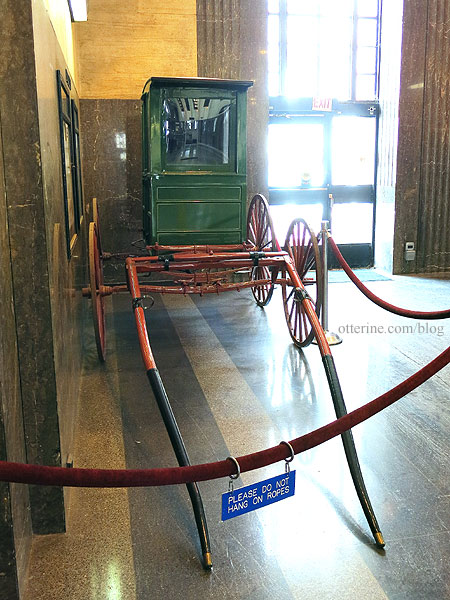
It’s very shiny, so I had to be mindful of not getting my own reflection.
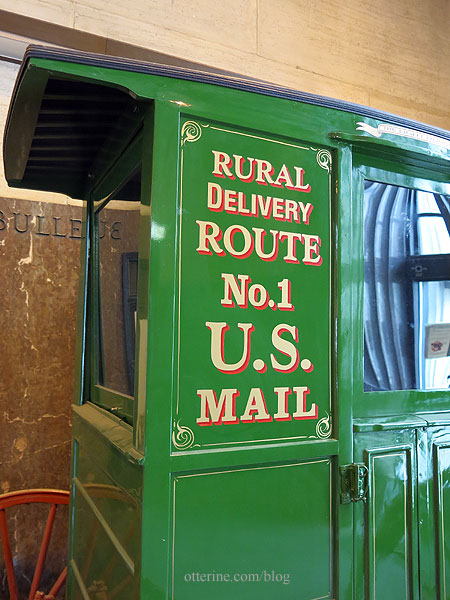
Now I have detailed pics of the undercarriage and detailing of an actual mail wagon.
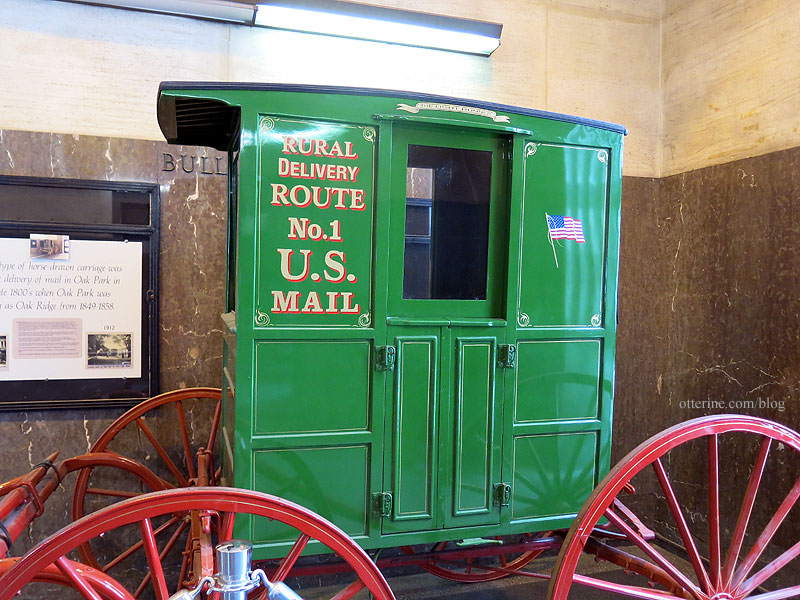
Categories: Ivy Hollow RFD, Model Cars, Vehicles
April 6, 2019 | 0 commentsIvy Hollow – screen door, part 1
Before I can build a new frame for my Houseworks door and screen door, I need to build said screen door. I’ll want the screen door to be fairly thin but stable enough for hinges. I’m using the sandwich method I used on the Otter Cove modern door with a few changes. In fact, the solid door I’ll be using is the leftover part from Otter Cove’s door frame.
I started with a new package of Aluminum Micro-Mesh by Scale Scenics. This material is finer and stiffer than the screen material that came with the Greenleaf screen door, though I do like the black a little better. I have tried painting this mesh before without success, so perhaps I will try some blackening product on it to see if that will work. If not, I hope the silver metal won’t be too much for a darker color door. If so, I might have to change my planned trim colors.
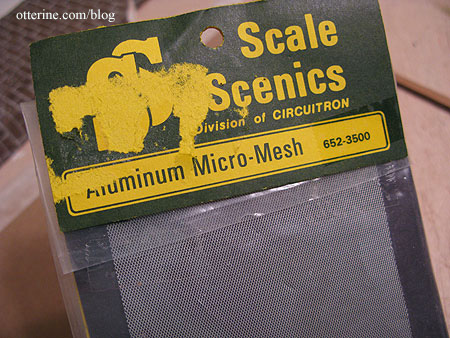
The package comes with black cardstock to show off the mesh, so I used that for my inner portion. Nothing that can serve a purpose goes to waste. :]
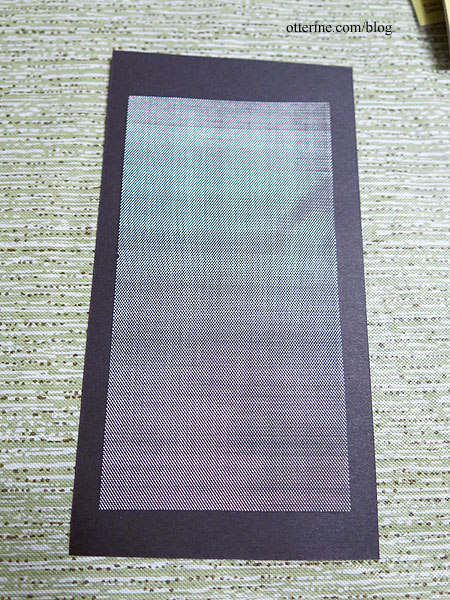
I cut a rectangle the size of the Houseworks door.
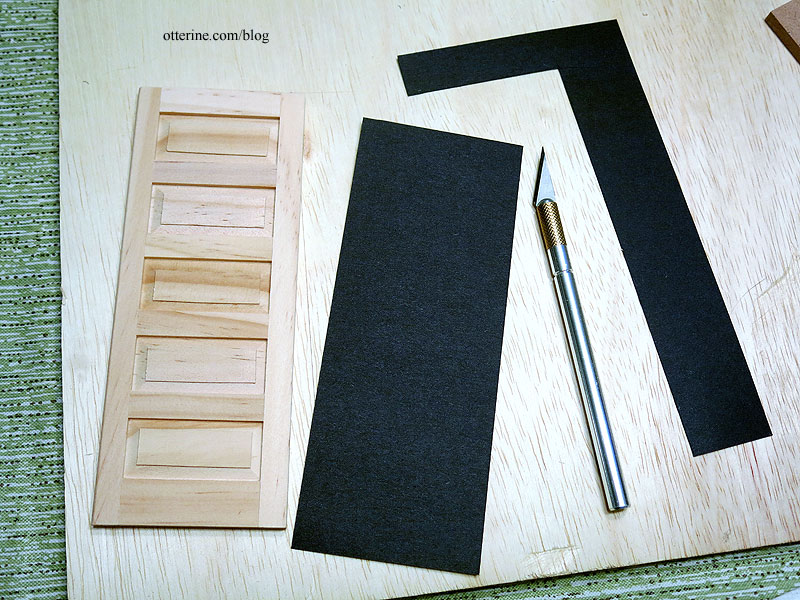
I cut the mesh to fit as best as possible over the Houseworks door. I will build an outer frame similar to the solid door.
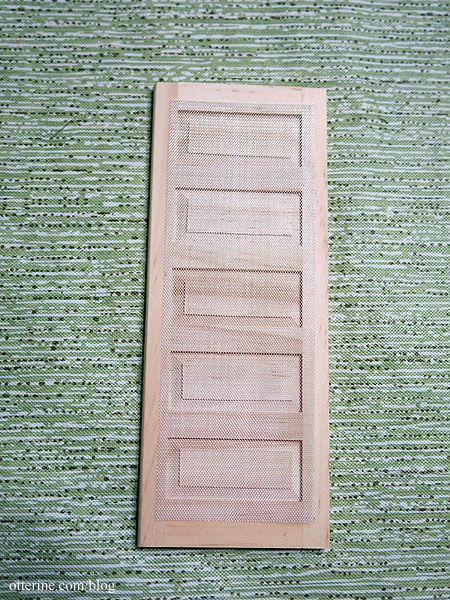
I marked the rough placement on the black card stock.
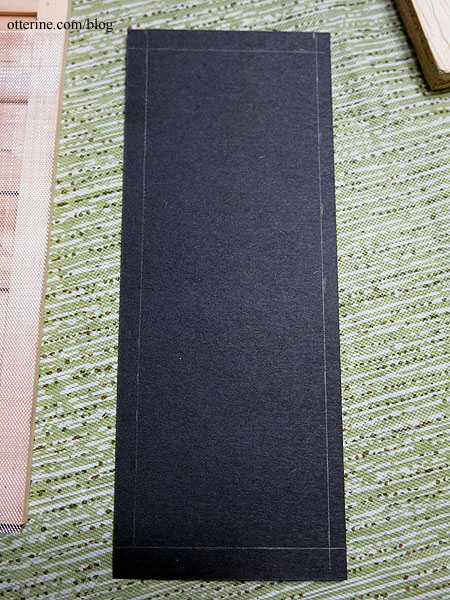
I cut out an inner rectangle that would encompass the mesh.
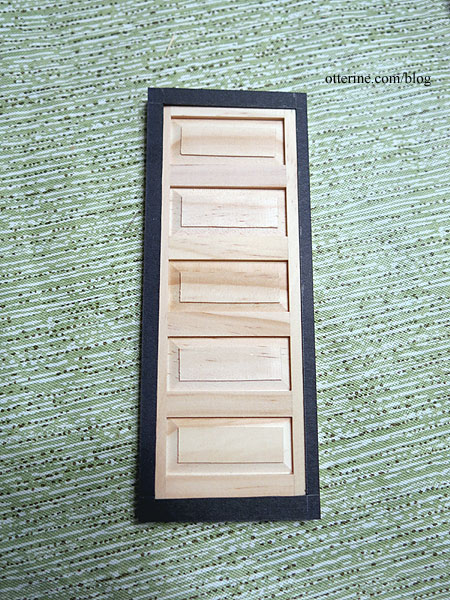
Using the solid door as a guide, I cut a border from 3/8″ by 1/16″ strip wood for the top and sides, and 1/2″ by 1/16″ strip wood for the bottom. I went with wider boards not only because the mesh is limited in size but also because I need the door to be substantial enough to function. If you look up vintage wood screen doors, you’ll find a lot of heavy, substantial doors. I can hear the bang as it slams shut in the wind.
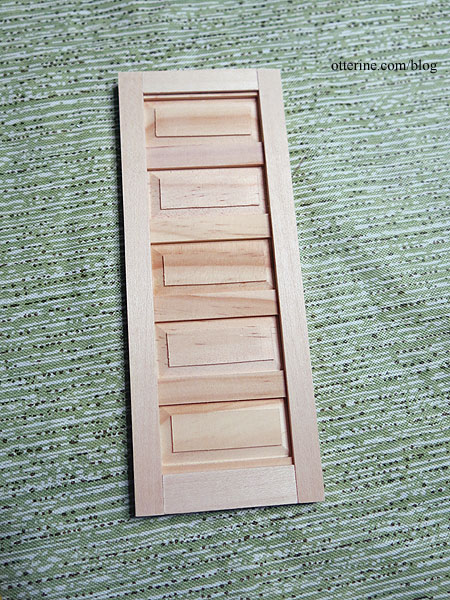
The cardstock fits over the strip wood, and the piece of mesh fits inside the cardstock.
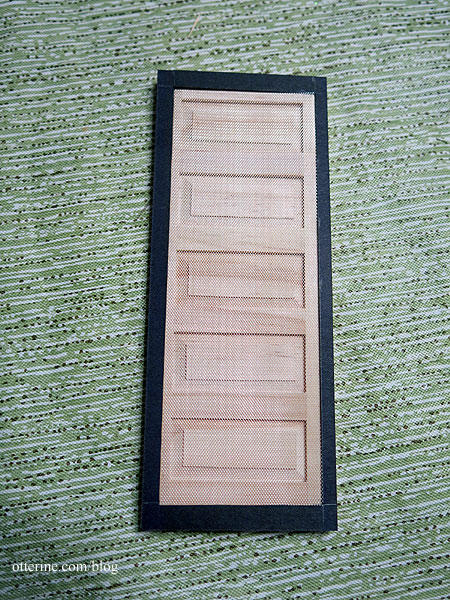
Another set of matching wood strips completes the other side of the door sandwich. :] I’ll add some crossbars and supports later during the final assembly.
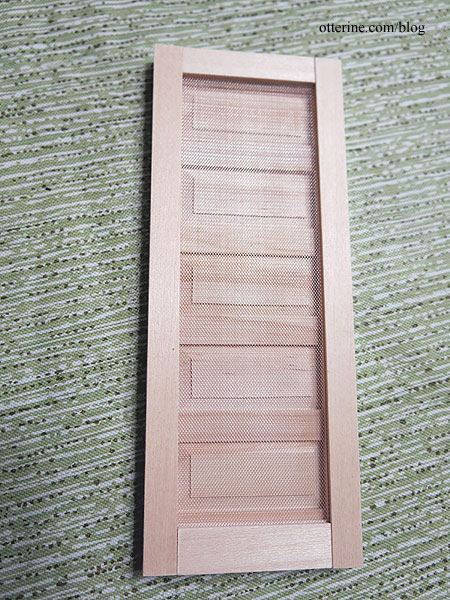
None of this is glued, because it would never stay together during the painting process. I’ll paint the initial coat on these pieces (and crossbar strips) and attempt to darken the mesh next, then I will assemble and touch up the paint.
Categories: Ivy Hollow RFD
April 2, 2019 | 0 commentsRare find
Along the way of researching, I often run into old books due to the era I choose to emulate in my builds. Making a turn of the century mail wagon led me on such a journey. There are other books I’ll mention, but this one is a true gem. It’s called Plans and Dimensions of U.S. Mail Wagon of 1880 by A.S. Dodd. In 1951, Jack D. Rittenhouse published a reprint of the article from a magazine called The Hub and limited it to 295 copies. Given the rarity, it’s not surprising to find that there are only seven libraries that have a copy, six of which are universities.
I tried to obtain a copy through interlibrary loan, but the request was denied due to the item’s status as non-circulating. The closest locale was over 700 miles away, so a road trip wasn’t really in the cards. I wrote to the Wyoming State Library to see if their copy was circulating since it didn’t indicate that it was not. A staff member replied that they would send it out of state but it would have to be kept on the premises of my local library. That was perfectly acceptable to me, so off my request went.
It showed up a short time later, and the library staff indicated I could see it on my usual Bookmobile stop since the Bookmobile was considered library property. But, I wanted to be able to take my time and perhaps make some copies if it turned out to be a good resource, so I waited until the upcoming weekend to head to the library. My boyfriend and I went to the library and saw an amazing bit of history. While not particularly useful for my project, the booklet was simply wonderful.

The booklet was set into a card folder to protect it, but it was still worn from handling and age. I don’t know if libraries still stamp due dates with the modern barcode technology, so it might have been checked out since 2003, or maybe not.

The copy was held together with tape in some places, so we gingerly made copies and took photos.

When we got home after dinner, I did another quick google search and a copy popped up on amazon. The listing indicated it was in like new condition and included a 1981 stamp of the very mail wagon featured in the booklet. It was pricey, but when it arrived, it was more than worth it.

There’s a little separation of the outer page along the fold, but other than that it is perfect. The stamp sleeve has been signed by the publisher.

Such a great addition to the original reprint.

So, now we know there are eight still floating around for sure – seven at libraries and mine. :)

Categories: Books and media, Ivy Hollow RFD
March 28, 2019 | 0 commentsMail Wagon – part 2
Continuing work on the Mail Wagon. After my visit to the Wesley W. Jung Carriage Museum, I was even more inspired to make the mail wagon as realistic as possible. If you do a google search for RFD mail wagons, you will find a wide array of vehicles. Some are tiny and some are posh, and even the suspensions vary. This is because the carriers were to buy, store and maintain their own vehicles (and horses). I’m choosing to make what appeals to me aesthetically as well as what I think will be a reasonable build to attempt. Since most cabins were basic boxes, the more challenging part is emulating the suspension.
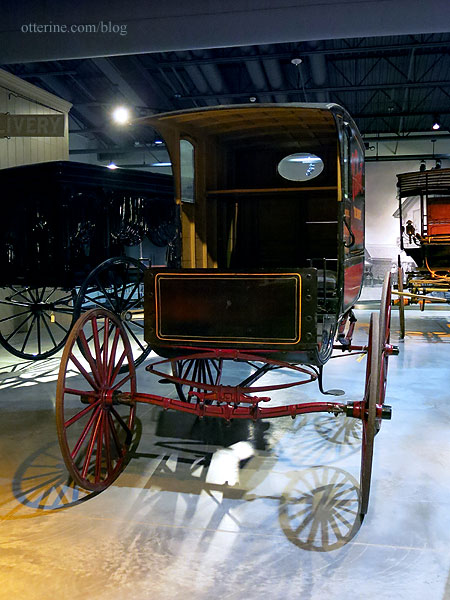
Tobacco wagon at the Wesley W. Jung Carriage Museum with similar suspension The Rondell mail wagon kit is completely lacking these suspension details, and after seeing the real life examples, I’m thinking the wheels from that kit would be too bulky as well. The farm wagons and other utility vehicles had substantial wheels, but the mail wagon wheels were rather slight and dainty.
During my research this week, I happened upon a 1:12 scale Doctor’s Buggy by Model Trailways. This can be pricey depending on the retailer, but I found a great deal on amazon for $50 plus free shipping (as an Amazon Associate, I earn from qualifying purchases).
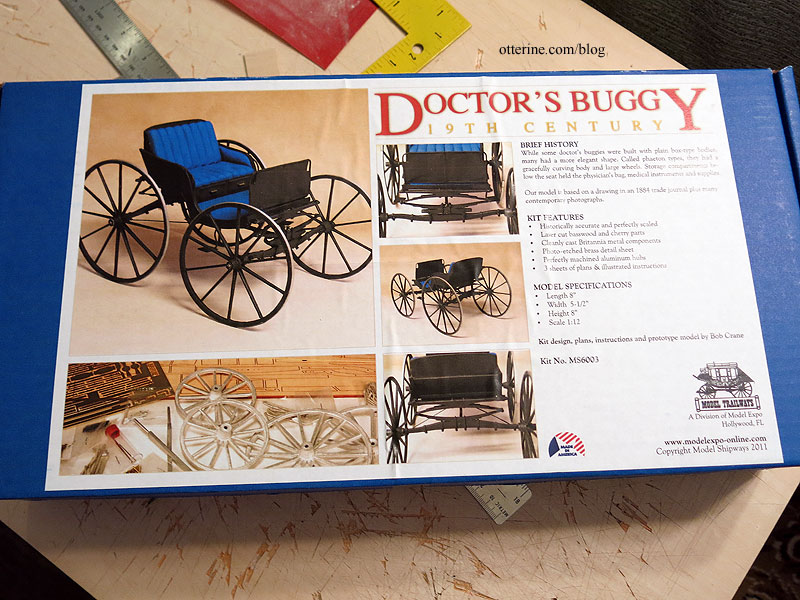
It has the exact suspension I need and daintier wheels than the Rondell kit.
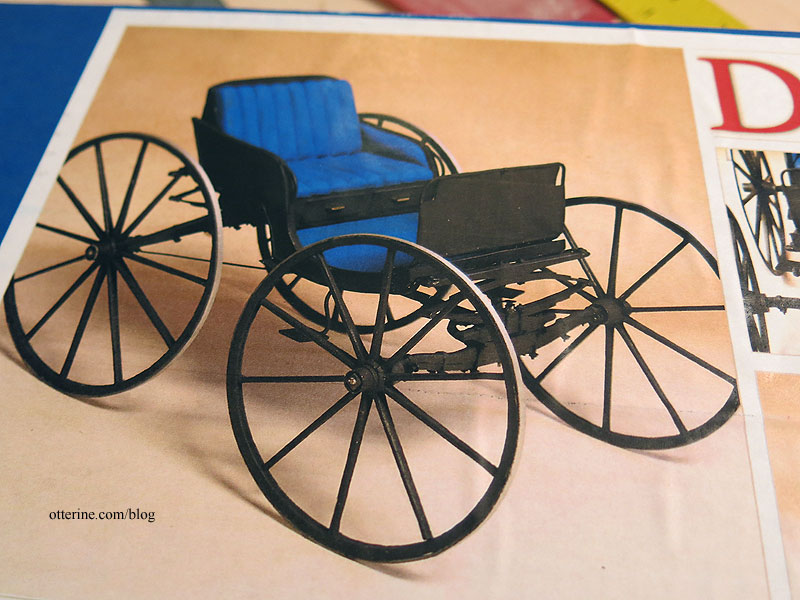
Considering the time and effort I would expend to recreate these parts, the kit is worth it for those parts alone.
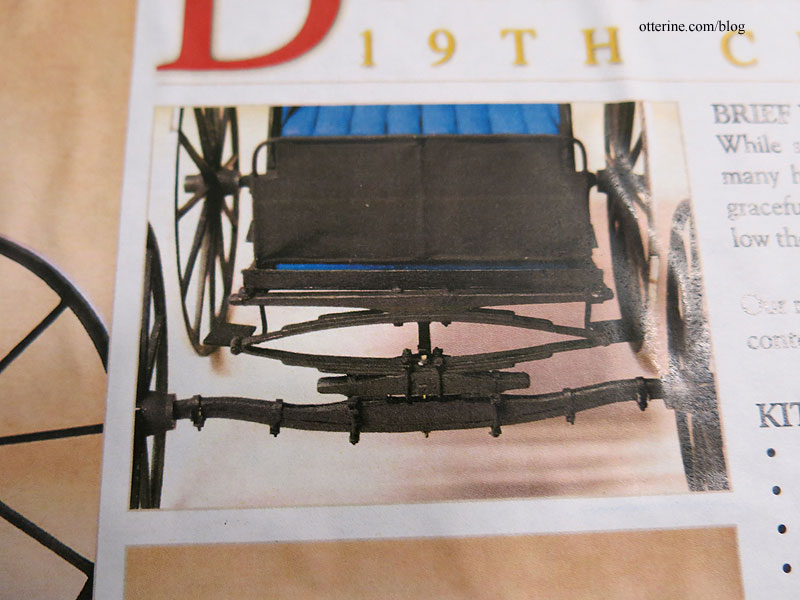
The springs and axles are actually metal in this kit. The wheels will spin and turn, which is just fabulous! I think it should be fairly straightforward for me to extend the suspension front to back to accommodate a mail cabin that will likely be longer than the kit’s buggy compartment. Those compartment parts are equally fabulous – laser cut and precise.
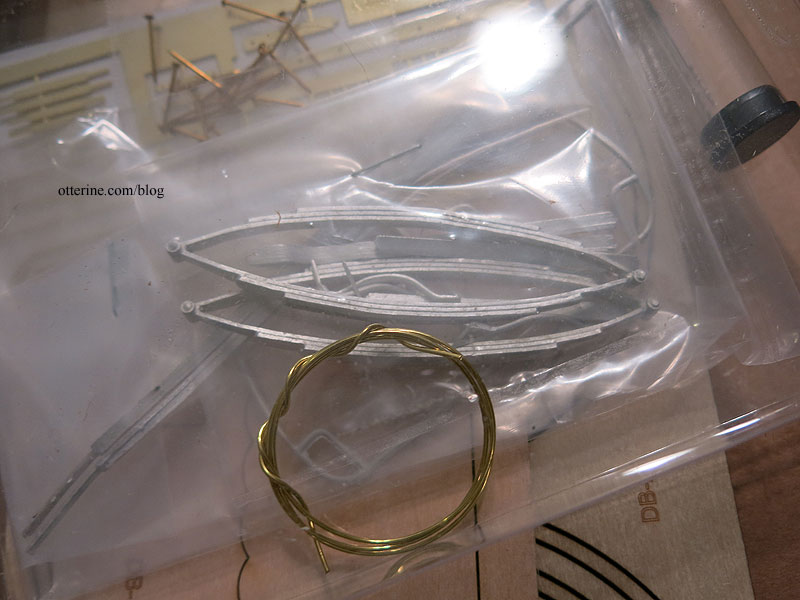
Now, the reviews say these are challenging kits, but I’m up for it. :D Plus, I’ve made many model cars, so I’m used to confusing, vague and outright erroneous instructions. I’ll start by making the front and back assemblies independently, including the wheels, then build my mail cabin to fit before I make adjustments to the length of the suspension. I’ll need to be mindful of adding too much weight in case the metal parts are more delicate than they seem. I’ll weigh the doctor’s buggy parts as a guide.
Categories: Ivy Hollow RFD, Model Cars, Vehicles
March 15, 2019 | 0 commentsWesley W. Jung Carriage Museum
This past weekend, my boyfriend and I visited the Wesley W. Jung Carriage Museum at the Wade House historical site in Greenbush, WI. It’s a 20,000 square-foot museum with some of the finest carriages and displays I’ve seen. It has been cold and snowy in the area, so I hope that is why there weren’t many visitors. It’s a great place that maybe people take for granted. But, maybe it’s more seasonal when people can tour the grounds and partake in festivities in warmer months. Even though we didn’t go to the other places in the complex, the carriage museum alone was worth the visit.
There’s a gorgeous stagecoach before you reach the ticket counter, and you can climb inside. There’s an automated speaker that gives you a fun experience, and a gift shop with a lot of vintage candies.
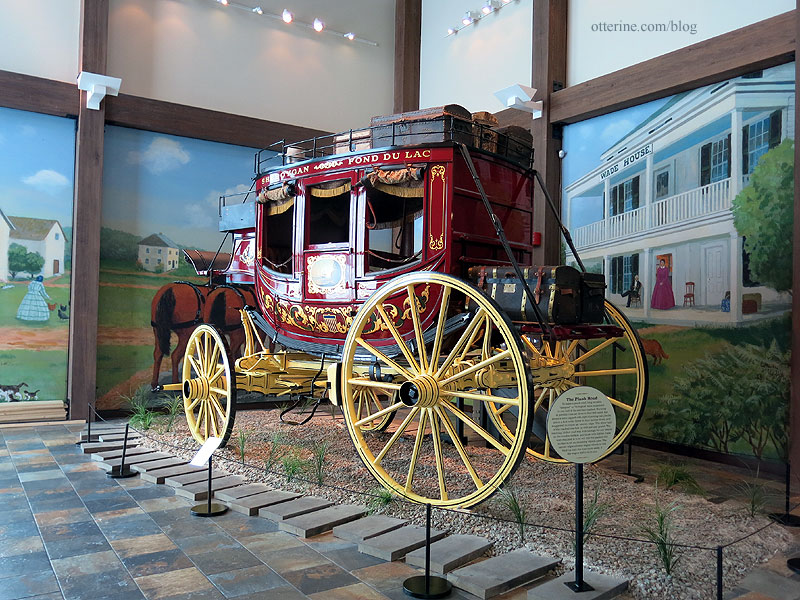
Since we were the only visitors, the curator Jim gave us a guided tour of some of the more relevant carriages for my RFD build. While they didn’t have an actual mail wagon in the collection, there were a couple that had similar suspensions and features to various mail wagons I’ve seen in my research. After this helpful start, we roamed the museum, making two full laps to take it all in.
This tobacco wagon was the closest in size and type of suspension, at least for the front.
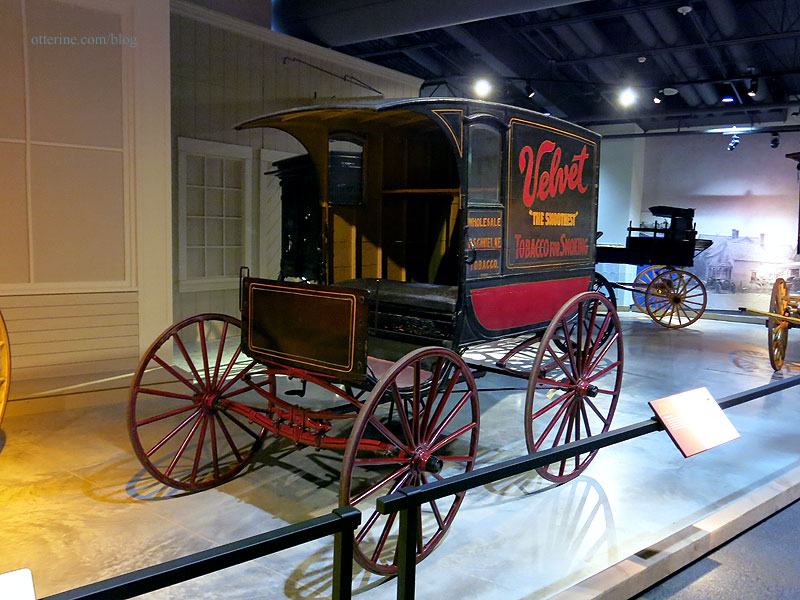
I was able to get some great photos of the underside that showed me how it was all put together. Much of this was made from metal. I don’t plan to recreate in metal, but I think I can get a nice replication in other materials.

There was a great side room that showed the springs and wheel construction, as well as how it was all put together.
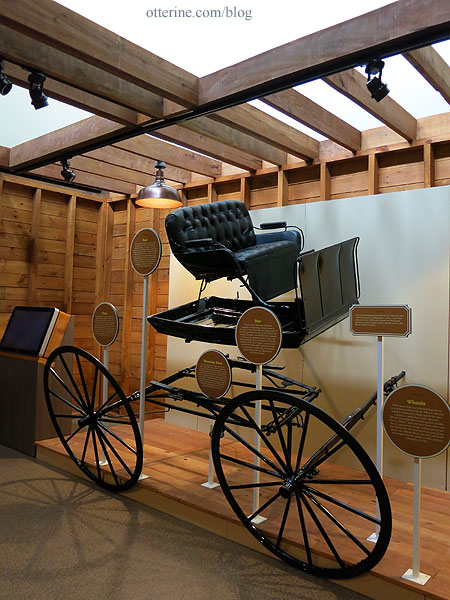
This milk wagon has sliding interior doors, which I’ve seen in some of the mail wagons.
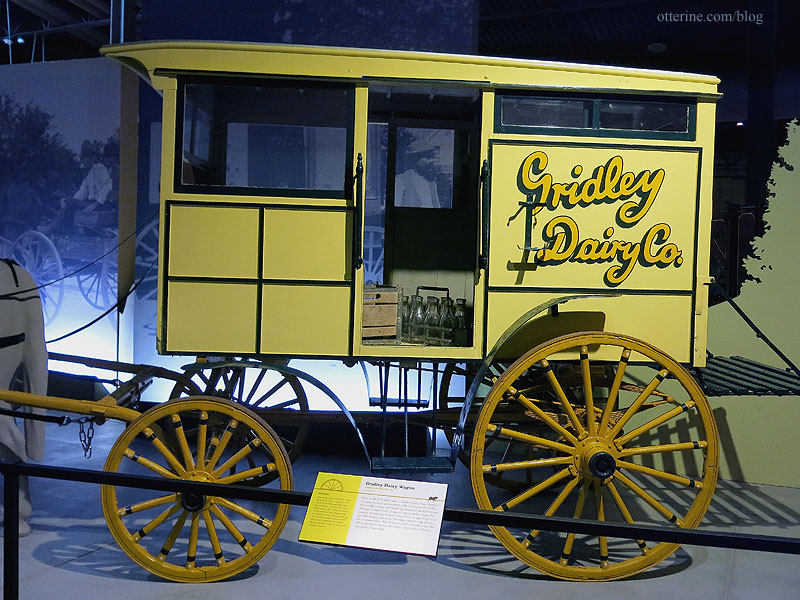
This carriage has a closer match to the back suspension I’ve seen in mail wagons.
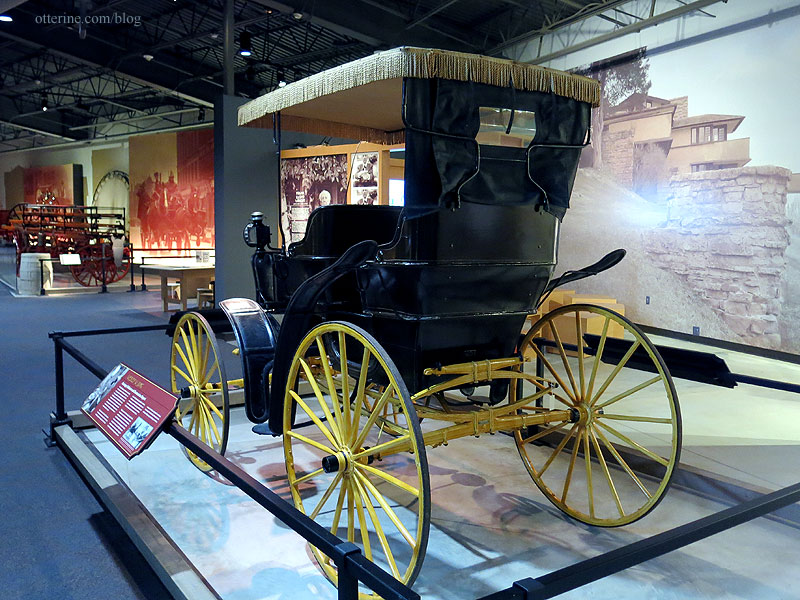
There were a few horse models on display, so I was also able to get some great shots of the harness setup.
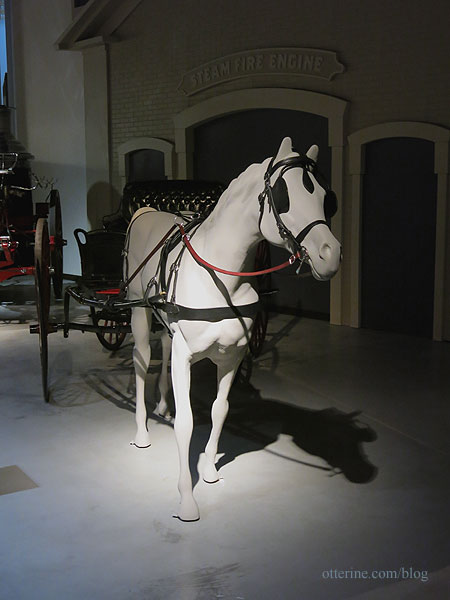
I have some library books to peruse as well, which I will detail separately, but it was awesome to see examples in person.
Categories: Ivy Hollow RFD
March 11, 2019 | 0 comments
NOTE: All content on otterine.com is copyrighted and may not be reproduced in part or in whole. It takes a lot of time and effort to write and photograph for my blog. Please ask permission before reproducing any of my content. (More on copyright)



